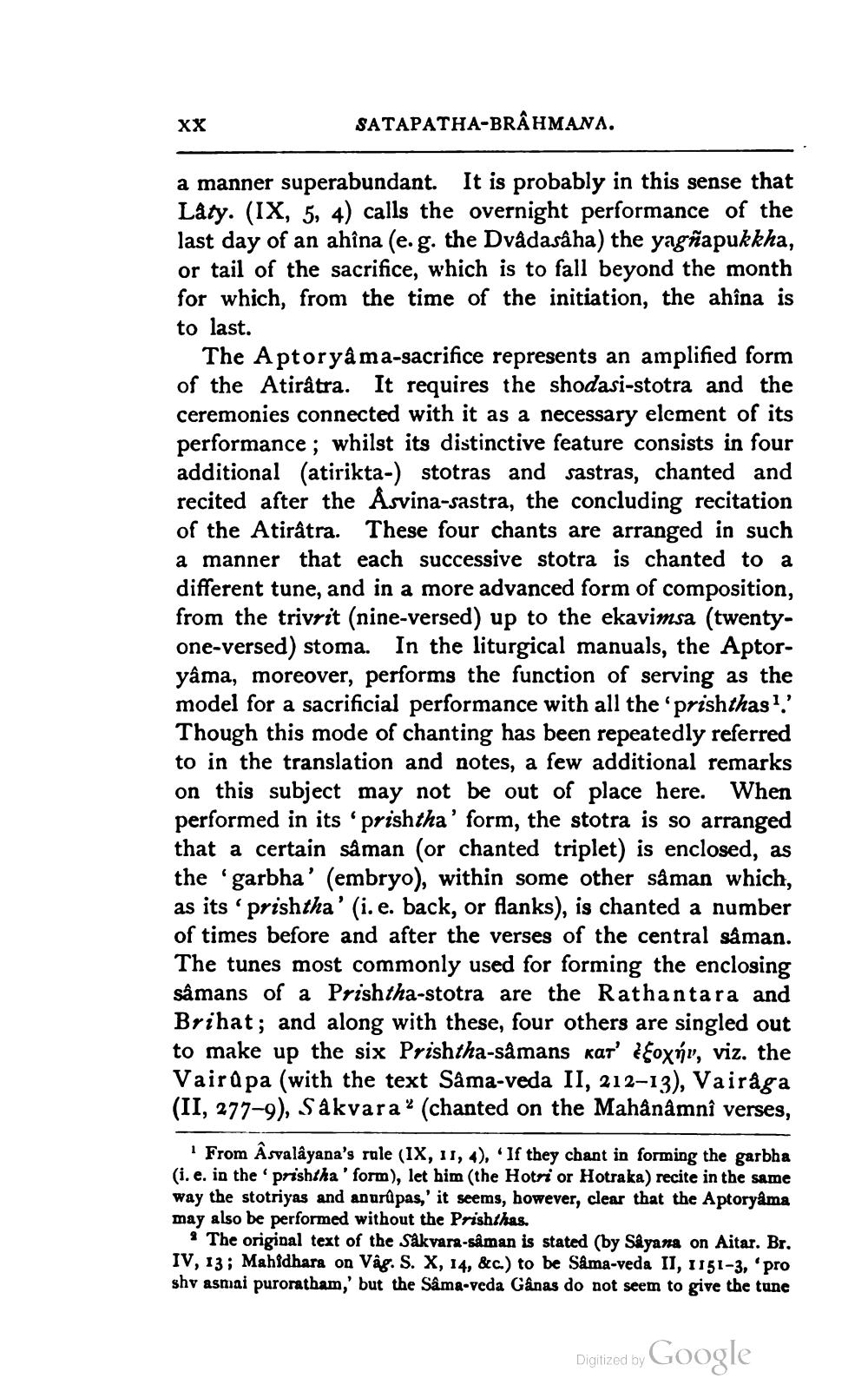________________
XX
SATAPATHA-BRAHMANA.
a manner superabundant. It is probably in this sense that Laty. (IX, 5, 4) calls the overnight performance of the last day of an ahîna (e.g. the Dvadasaha) the yagñapukkha, or tail of the sacrifice, which is to fall beyond the month for which, from the time of the initiation, the ahîna is to last.
The Aptoryama-sacrifice represents an amplified form of the Atirâtra. It requires the shodasi-stotra and the ceremonies connected with it as a necessary element of its performance; whilst its distinctive feature consists in four additional (atirikta-) stotras and sastras, chanted and recited after the Åsvina-sastra, the concluding recitation of the Atirâtra. These four chants are arranged in such a manner that each successive stotra is chanted to a different tune, and in a more advanced form of composition, from the trivrit (nine-versed) up to the ekavimsa (twentyone-versed) stoma. In the liturgical manuals, the Aptoryâma, moreover, performs the function of serving as the model for a sacrificial performance with all the 'prishthas?.' Though this mode of chanting has been repeatedly referred to in the translation and notes, a few additional remarks on this subject may not be out of place here. When performed in its 'prishtha' form, the stotra is so arranged that a certain saman (or chanted triplet) is enclosed, as the 'garbha' (embryo), within some other såman which, as its 'prishtha' (i.e. back, or flanks), is chanted a number of times before and after the verses of the central såman. The tunes most commonly used for forming the enclosing såmans of a Prishtha-stotra are the Rathantara and Brihat; and along with these, four others are singled out to make up the six Prishtha-såmans karoxýv, viz. the Vair apa (with the text Sâma-veda II, 212–13), Vairåga (II, 277-9), Sakvara? (chanted on the Mahânâmnî verses,
From Asvalâyana's rule (IX, 11, 4), If they chant in forming the garbha (i. e. in the prishtha 'form), let him (the Hotri or Hotraka) recite in the same way the stotriyas and anurupas,' it seems, however, clear that the Aptoryama may also be performed without the Prishthas.
• The original text of the Säkvara-sâman is stated (by Sâyana on Aitar. Br. IV, 13; Mahidhara on Våg. S. X, 14, &c.) to be Sama-veda II, 1151-3, 'pro shv asmai puroratham,' but the Sama-veda Ganas do not seem to give the tune
Digitized by Google




